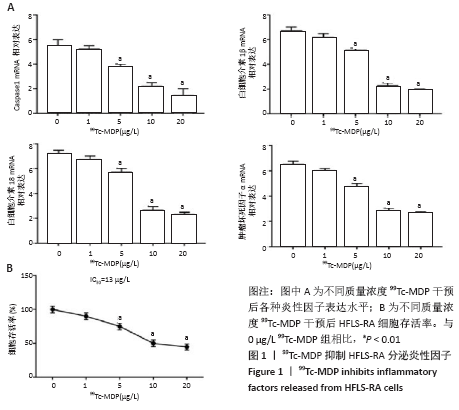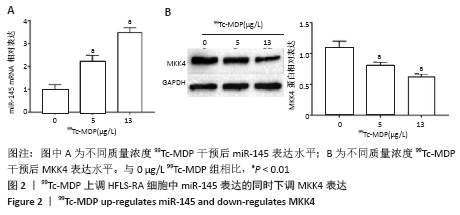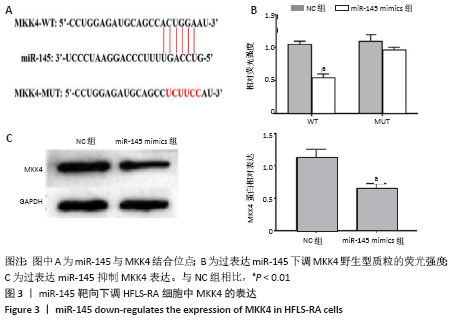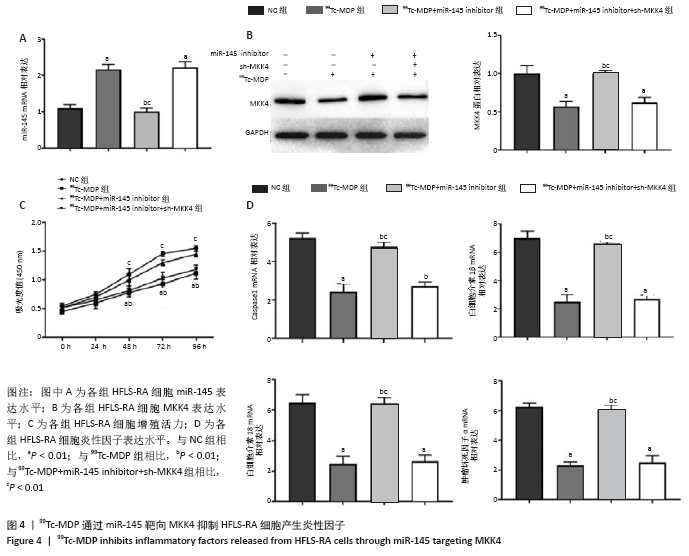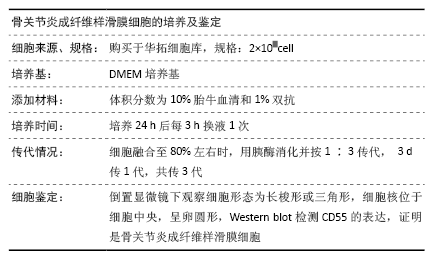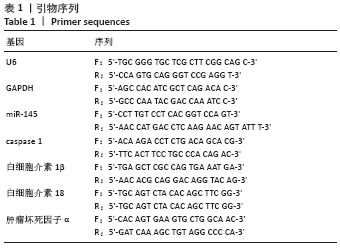[1] PUN YL, MOSKOWITZ RW, LIE S, et al. Clinical correlations of osteoarthritis associated with a single-base mutation (arginine519 to cysteine) in type II procollagen gene. A newly defined pathogenesis. Arthritis Rheum. 1994;37(2):264-269.
[2] ROEMER FW, KWOH CK, HANNON MJ, et al. Partial meniscectomy is associated with increased risk of incident radiographic osteoarthritis and worsening cartilage damage in the following year. Eur Radiol. 2017;27(1):404-413.
[3] LAI K, JIN C, TU S, et al. Intravitreal injection of (99)Tc-MDP inhibits the development of laser-induced choroidal neovascularization in rhesus monkeys. Graefes Arch Clin Exp Ophthalmol. 2014;252(7):1049-1057.
[4] ZHAO Y, WANG L, LIU Y, et al. Technetium-99 conjugated with methylene diphosphonate ameliorates ovariectomy-induced osteoporotic phenotype without causing osteonecrosis in the jaw. Calcif Tissue Int. 2012;91(6):400-408.
[5] LAI K, XU L, JIN C, et al. Technetium-99 conjugated with methylene diphosphonate (99Tc-MDP) inhibits experimental choroidal neovascularization in vivo and VEGF-induced cell migration and tube formation in vitro. Invest Ophthalmol Vis Sci. 2011;52(8):5702-5712.
[6] CHEN J, LAN Y, HE Y, et al. 99Tc-MDP-induced human osteoblast proliferation, differentiation and expression of osteoprotegerin. Mol Med Rep. 2017;16(2):1801-1809.
[7] WANG GD, ZHAO XW, ZHANG YG, et al. Effects of miR-145 on the inhibition of chondrocyte proliferation and fibrosis by targeting TNFRSF11B in human osteoarthritis. Mol Med Rep. 2017;15(1):75-80.
[8] NISHITANI K, ITO H, HIRAMITSU T, et al. PGE2 inhibits MMP expression by suppressing MKK4-JNK MAP kinase-c-JUN pathway via EP4 in human articular chondrocytes. J Cell Biochem. 2010;109(2):425-433.
[9] HU G, ZHAO X, WANG C, et al. MicroRNA-145 attenuates TNF-α-driven cartilage matrix degradation in osteoarthritis via direct suppression of MKK4. Cell Death Dis. 2017;8(10):e3140.
[10] MIYAKI S, ASAHARA H. Macro view of microRNA function in osteoarthritis. Nat Rev Rheumatol. 2012;8(9):543-552.
[11] ZHANG W, MOSKOWITZ RW, NUKI G, et al. OARSI recommendations for the management of hip and knee osteoarthritis, part I: critical appraisal of existing treatment guidelines and systematic review of current research evidence. Osteoarthritis Cartilage. 2007;15(9):981-1000.
[12] CROSS M, SMITH E, HOY D, et al. The global burden of hip and knee osteoarthritis: estimates from the global burden of disease 2010 study. Ann Rheum Dis. 2014;73(7):1323-1330.
[13] HUNTER DJ. Pharmacologic therapy for osteoarthritis--the era of disease modification. Nat Rev Rheumatol. 2011;7(1):13-22.
[14] LORIES RJ, LUYTEN FP. The bone-cartilage unit in osteoarthritis. Nat Rev Rheumatol. 2011;7(1):43-49.
[15] MU R, LIANG J, SUN L, et al. A randomized multicenter clinical trial of 99 Tc-methylene diphosphonate in treatment of rheumatoid arthritis. Int J Rheum Dis. 2018;21(1):161-169.
[16] WU Q, NI Y, YANG Q, et al. 99Tc-MDP treatment for the therapy of rheumatoid arthritis, choroidal neovascularisation and Graves’ ophthalmopathy. Biomed Rep. 2016;4(4):400-402.
[17] SU D, SHEN M, GU B, et al. (99) Tc-methylene diphosphonate improves rheumatoid arthritis disease activity by increasing the frequency of peripheral γδ T cells and CD4(+) CD25(+) Foxp3(+) Tregs. Int J Rheum Dis. 2016;19(6):586-593.
[18] WANG L, GU Q, XU Y, et al. Effects of Yunke (technetium-99 conjugated with methylene diphosphonate; (99)Tc-MDP) and/or colloidal chromic phosphate phosphonium-32, alone and in combination, in rats with adjuvant arthritis. Clin Exp Pharmacol Physiol. 2008;35(1):23-28.
[19] HU J, WANG Z, PAN Y, et al. MiR-26a and miR-26b mediate osteoarthritis progression by targeting FUT4 via NF-κB signaling pathway. Int J Biochem Cell Biol. 2018;94:79-88.
[20] NTOUMOU E, TZETIS M, BRAOUDAKI M, et al. Serum microRNA array analysis identifies miR-140-3p, miR-33b-3p and miR-671-3p as potential osteoarthritis biomarkers involved in metabolic processes. Clin Epigenetics. 2017;9:127.
[21] CHEN L, LI Q, WANG J, et al. MiR-29b-3p promotes chondrocyte apoptosis and facilitates the occurrence and development of osteoarthritis by targeting PGRN. J Cell Mol Med. 2017;21(12): 3347-3359.
[22] HONG BK, YOU S, YOO SA, et al. MicroRNA-143 and -145 modulate the phenotype of synovial fibroblasts in rheumatoid arthritis. Exp Mol Med. 2017;49(8):e363.
[23] DÉRIJARD B, RAINGEAUD J, BARRETT T, et al. Independent human MAP-kinase signal transduction pathways defined by MEK and MKK isoforms. Science. 1995;267(5198):682-685.
[24] HAN J, LEE JD, JIANG Y, et al. Characterization of the structure and function of a novel MAP kinase kinase (MKK6). J Biol Chem. 1996;271(6):2886-2891.
[25] BRANCHO D, TANAKA N, JAESCHKE A, et al. Mechanism of p38 MAP kinase activation in vivo. Genes Dev. 2003;17(16):1969-1978.
[26] MANTENA SK, KATIYAR SK. Grape seed proanthocyanidins inhibit UV-radiation-induced oxidative stress and activation of MAPK and NF-kappaB signaling in human epidermal keratinocytes. Free Radic Biol Med. 2006;40(9):1603-1614.
[27] LAI L, SONG Y, LIU Y, et al. MicroRNA-92a negatively regulates Toll-like receptor (TLR)-triggered inflammatory response in macrophages by targeting MKK4 kinase. J Biol Chem. 2013;288(11):7956-7967.
[28] ZHANG L, ZHOU M, WANG Y, et al. miR-92a inhibits vascular smooth muscle cell apoptosis: role of the MKK4-JNK pathway. Apoptosis. 2014;19(6):975-983. |
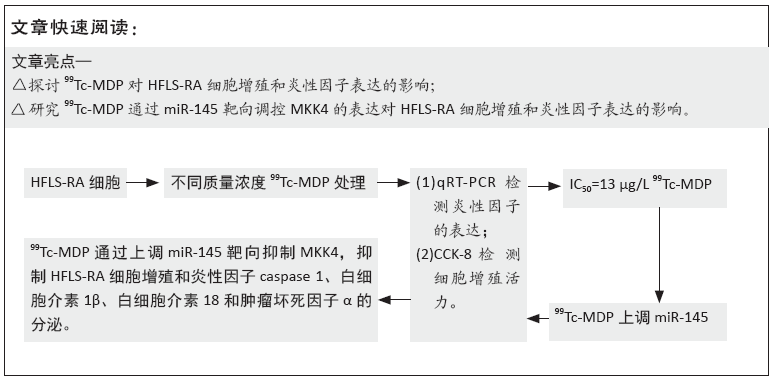 文题释义:
文题释义: